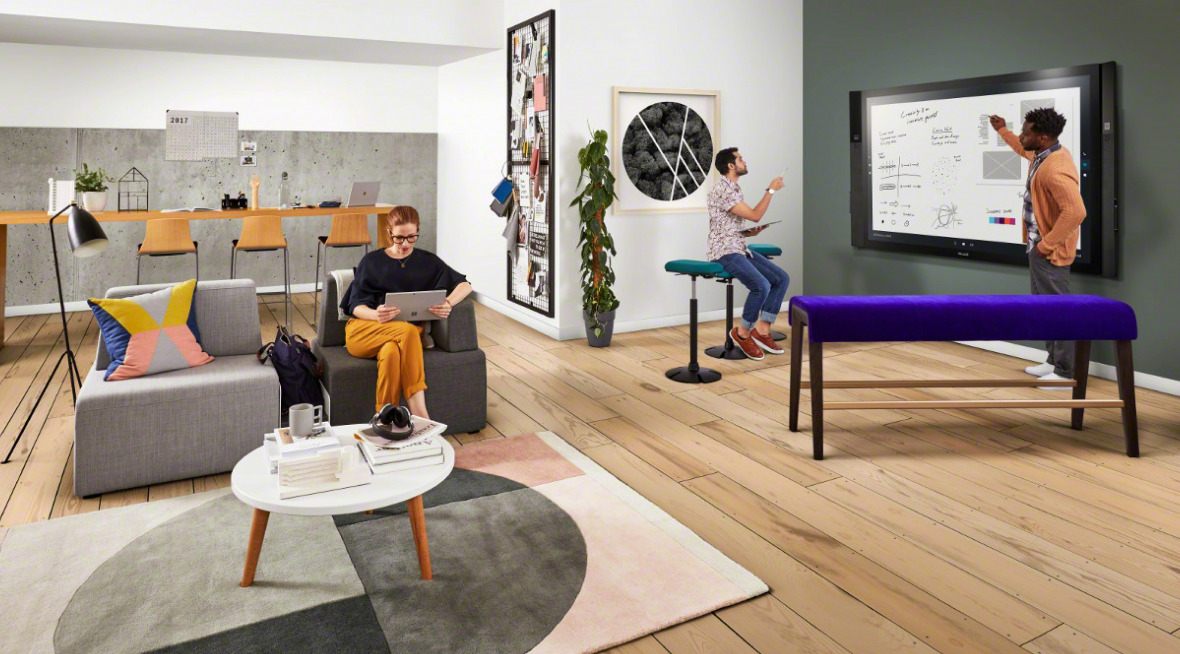We use cookies to maximize your online experience with us. By closing this window, you consent to our cookie policy. You can change your cookie settings in your browser any time. For more information, please see our Privacy Policy located on the footer of this site.
Create the Right Environment to Support How You Work

“Ideas are the currency of the new economy,” wrote economist and social scientist Richard Florida, author of The Rise of the Creative Class. He argued that creative work is about a focus on generating new ideas and solving complex problems. As we explore in the dancker white paper “The Future of Work is Creative,” we recognize the complexity and scale of today’s problems and address how technologies and spaces are enhancing creative behaviors. The demand and desire for creativity at work is driving innovation stronger than ever before, but what is the “right” integration of space, furniture and technology for your workplace? To define the ideal environment, we must first understand how you work.
One Size Does Not Fit All
Every business is unique and thrives on its exceptional, creative workforce. To successfully foster the innovative, disruptive ideas that will escalate your company to the top, your people must have a creative, inspired environment that supports new behaviors and processes. Creativity doesn’t fit into a predetermined design and neither will your integrated architecture, furniture, and technology solution.
In order to gain an understanding of the desired outcome, we must first learn about the users, their workflows, experience levels, and expectations. An initial exploratory meeting should include project stakeholders from each department including representation from IT. The focus will not be on hardware but, instead, on how the space will be used. Technologies that are of interest can be discussed, but the environment should not be designed around any preconceived technology solution or display type.
A great example of this unified approach is real estate services and investment firm CBRE. The firm had launched a redesign of their global offices to address the results of a workplace study that showed vacant or underutilized space and “siloed” cubicles that were preventing effective collaboration. They conducted a 360-degree assessment, interviewing company leaders, conducting employee surveys and facilitating focus-group studies to see how employees used their space and what they thought was missing. As a result, employees now enjoy a more flexible, mobile and collaborative workplace. In addition, in at least one of the locations, the improved design led to smaller space requirements which allowed them to reallocate funding in support of IT initiatives.
To uncover the requirements, consider:
- What are your company’s workflows?
- How does your company collaborate? In for large team meetings, small groups? Formal or casual sessions?
- Who will be using the space and its system(s)?
- What is their experience level?
- Will staff be working remotely?
- Who will you be collaborating with and presenting to?
- Is there a company standard such as Skype for Business or Cisco WebEx?
- What is the desired interface: minimal interaction, single-button press or plug-n-play functionality? Do you want a hand-held remote control or an installed, in-furniture device?
- Will users be mobile via smart phones and tablets (BYOD)? How many connections will be required?
- Are there network security concerns where point-to-point connectivity or a secure, wired solution is preferred?
- Do you desire a standardized solution that can be replicated across the enterprise?
- What is the 5-year technology plan?
Solution Drives the Best Possible Outcome
This unified approach ensures technology is not an afterthought, but a well-planned and designed solution that enables today’s creativity and scales for tomorrow’s success! These well thought out workplaces are not simply a trend but a vital part of your technology strategy and key to igniting today’s dynamic worker. dancker understands each of the elements that make up these successful environments and can help you and your team develop the creative spaces that will complement the uniqueness of your organization
